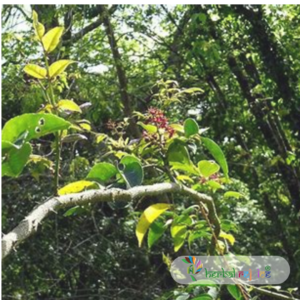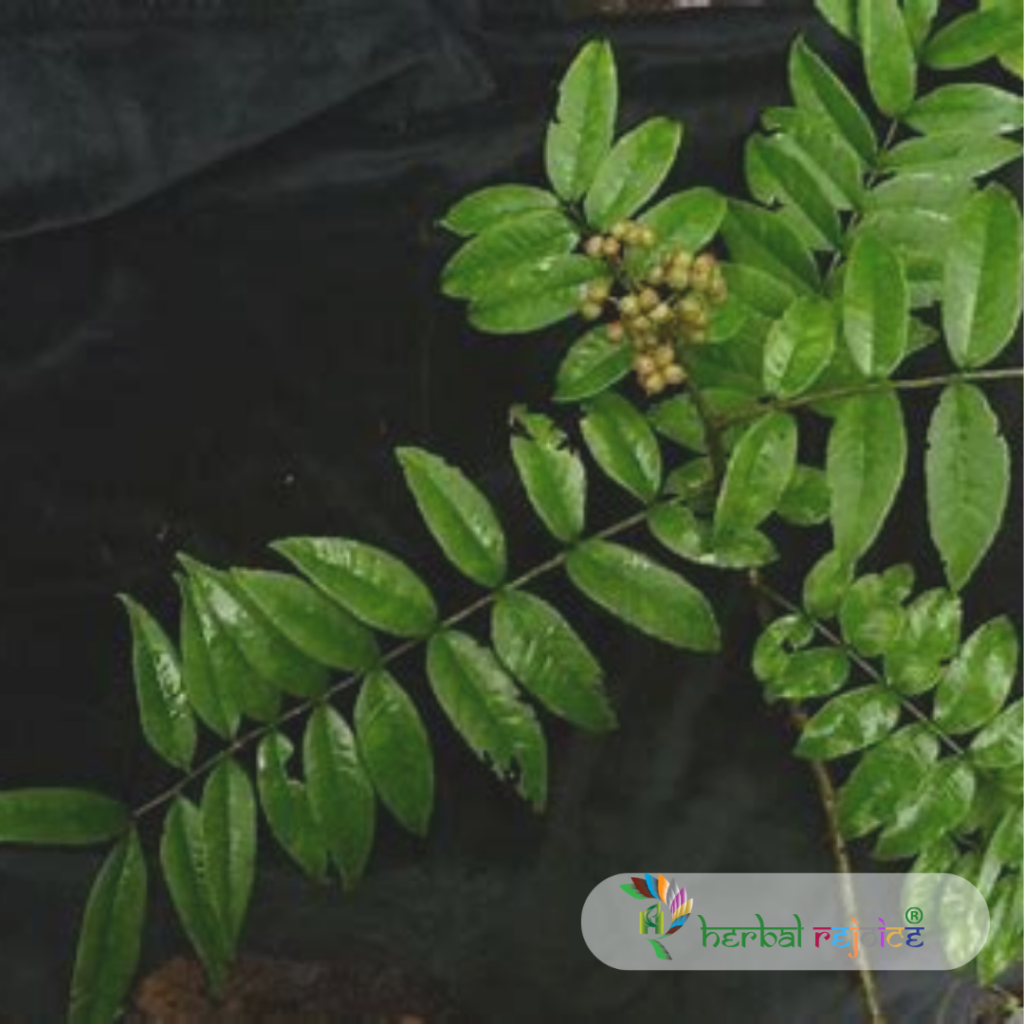Introduction
Zanthoxylum oxyphyllum Edgew., also known as Xanthoxylon violaceum Wall. or Fagara oxyphylla (Edgew.) Engl., is a plant belonging to the Rutaceae family. It can be found in the Himalayas, specifically from Garhwal to Bhutan at altitudes of 1,800 to 2,700 meters, as well as in the Khasi Hills at altitudes of 1,200 to 1,800 meters. In local folk traditions, it is called Mezenga in Assam and Timur or Bhansi in Nepal.
Medicinal properties
The bark of Zanthoxylum oxyphyllum Edgew. has various medicinal properties. It is known to act as a stimulant, stomachic, and sudorific. It is commonly used to relieve colic and is sometimes administered during fevers. Additionally, the fruits of this plant are prescribed for dyspepsia and have also been used to alleviate symptoms of asthma, bronchitis, rheumatism, and toothache.

Chemical Constituents
Chemical analysis of Zanthoxylum oxyphyllum Edgew. has revealed the presence of alkaloids such as xanthoxyphyllin and corydine, as well as a lactone called 3,5-bis furan 2one, which is isolated from the roots. The stem bark contains zanoxyline and rhetsinine. Dried branches with bark contain lignans like sesamin, eudesmin, and epieudesmin, as well as the fluoroquinolone alkaloid gamma-fagarine, triterpenoid lupeol, beta-sitosterol, and syringaresinol.
Conclusion
In conclusion, Zanthoxylum oxyphyllum Edgew. is a plant with various medicinal uses. Its bark and fruits have been traditionally used to treat colic, fevers, dyspepsia, asthma, bronchitis, rheumatism, and toothache. The chemical components found in this plant provide further insight into its therapeutic potential.
Frequently Asked Questions
What is Zanthoxylum oxyphyllum commonly known as?
It is also known as Xanthoxylon violaceum or Fagara oxyphylla.
Where is Zanthoxylum oxyphyllum found?
It is found in the Himalayas, from Garhwal to Bhutan, and in the Khasi Hills.
At what altitude does Zanthoxylum oxyphyllum grow?
It grows at altitudes ranging from 1,200 to 2,700 meters.
What are the local names for Zanthoxylum oxyphyllum?
It is called Mezenga in Assam and Timur or Bhansi in Nepal.
What are the medicinal properties of Zanthoxylum oxyphyllum bark?
The bark acts as a stimulant, stomachic, and sudorific, relieving colic and fevers.
What ailments are treated with Zanthoxylum oxyphyllum fruits?
The fruits are used for dyspepsia, asthma, bronchitis, rheumatism, and toothache.
What chemical constituents are found in Zanthoxylum oxyphyllum?
The plant contains alkaloids like xanthoxyphyllin and corydine, as well as lignans like sesamin.
Which compounds are found in the roots of Zanthoxylum oxyphyllum?
The roots contain a lactone called 3,5-bis furan 2one.
What compounds are found in the stem bark of Zanthoxylum oxyphyllum?
The stem bark contains zanoxyline and rhetsinine.
Which lignans are present in Zanthoxylum oxyphyllum branches?
The branches contain sesamin, eudesmin, and epieudesmin.
What alkaloid is found in the dried branches of Zanthoxylum oxyphyllum?
The fluoroquinolone alkaloid gamma-fagarine is present in the dried branches.
Does Zanthoxylum oxyphyllum contain any triterpenoids?
Yes, the triterpenoid lupeol is found in the plant.
Which sterol is present in Zanthoxylum oxyphyllum?
The plant contains beta-sitosterol.
What are some traditional uses of Zanthoxylum oxyphyllum?
It has been used to treat colic, fevers, dyspepsia, asthma, and bronchitis.
Can Zanthoxylum oxyphyllum relieve toothache?
Yes, it is traditionally used to alleviate toothache.
Is Zanthoxylum oxyphyllum used for rheumatism?
Yes, it has been used to treat rheumatism.
What is the role of xanthoxyphyllin in Zanthoxylum oxyphyllum?
Xanthoxyphyllin is an alkaloid that contributes to the plant’s medicinal properties.
How does Zanthoxylum oxyphyllum help in digestive issues?
It helps relieve colic and dyspepsia due to its stomachic properties.
What is syringaresinol in Zanthoxylum oxyphyllum?
Syringaresinol is a lignan found in the plant, contributing to its medicinal benefits.
Why is Zanthoxylum oxyphyllum considered therapeutically valuable?
Its bark and fruits, rich in alkaloids, lignans, and other compounds, offer multiple medicinal uses.


